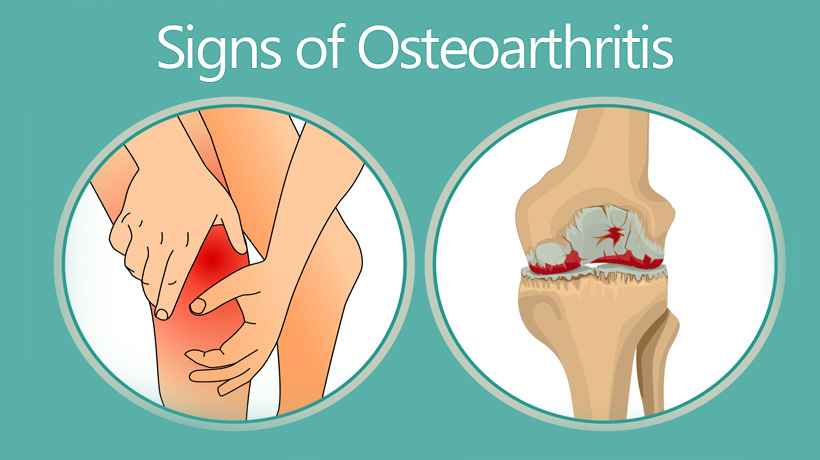If walking up the stairs has become a game of Guess the Origin of that Creaking Sound: Floorboards or Knees?, you might be exhibiting a symptom of osteoarthritis (OA). Here are some other common signs that are important to look out for, and what to do if you suspect that you could, in fact, have this condition.
Osteoarthritis is a chronic condition in which joint cartilage and underlying bones degenerate, causing a number of uncomfortable and/or painful symptoms (mentioned below). OA most commonly affects the hips, knees, and thumb joints.
Joint aching or soreness
Osteoarthritis typically only impacts certain joints. Many patients begin to notice pain in affected areas after prolonged activity or prolonged immobility. Because this condition is chronic, the pain generally does not go away and might even worsen with time without proper care.
Stiffness
Most people with OA experience joint stiffness upon first waking up in the morning, or after being inactive for extended periods of time.
Loss of flexibility
The aforementioned joint aching and stiffness might contribute to a loss of flexibility, or “range of motion.” You might no longer be able to fully extend your knees or raise your arms without bending your elbows. This symptom usually develops very gradually.
Grating sensation
Sometimes moving joints that are affected by OA will result in a grating sensation called “crepitus.” This usually happens when cartilage starts to rub away, which leaves bones grinding against each other and creating inflammation.
Frequently Asked Questions
What are some of the main risk factors?
Although a number of behaviors and traits increase your risk of osteoarthritis, these are the most common:
- Older age
- Obesity
- Sex (OA is more common in women)
- Joint injuries
- Consistent stress on certain joints
When should I see a doctor?
If you are experiencing one or more of the symptoms mentioned above, or you simply feel joint discomfort that is concerning to you, you should visit your doctor.
What kinds of diagnostic tools are typically used to identify OA?
As a preliminary diagnostic measure, your doctor will generally check your affected joints for tenderness, swelling, and flexibility. If he or she observes a problem, you might undergo:
- Imaging testing including X-rays and/or magnetic resonance imaging (MRIs)
- Blood tests
- Joint fluid analysis
What are the best treatment options?
Although OA is a chronic condition (persistent and cannot be cured), there are a number of treatment options available to reduce pain and discomfort. Some of these include:
- Medications such as acetaminophen, duloxetine (Cymbalta), or nonsteroidal anti-inflammatory drugs (NSAIDs)
- Physical therapy
- Occupational therapy
- Cortisone injections
- Joint replacement surgery
- Acupuncture
Sources:
https://creakyjoints.org/education/osteoarthritis/?gclid=EAIaIQobChMI36z34rD44gIVh0CGCh2HlAlfEAAYASAAEgIquvD_BwE
https://creakyjoints.org/education/osteoarthritis/?gclid=EAIaIQobChMI36z34rD44gIVh0CGCh2HlAlfEAAYASAAEgIquvD_BwE
https://www.mayoclinic.org/diseases-conditions/osteoarthritis/symptoms-causes/syc-20351925
https://www.everydayhealth.com/osteoarthritis/guide/symptoms/
https://www.hss.edu/osteoarthritis-questions.asp
https://www.aurorahealthcare.org/services/orthopedics/conditions/crepitus#Symptoms-and-Causes



